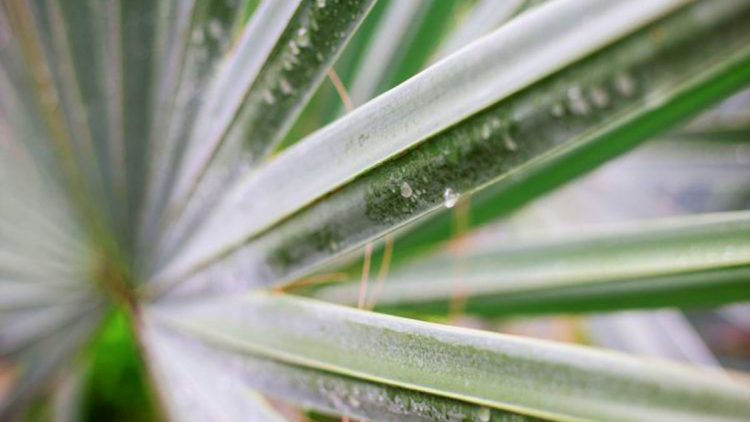Taking Care of Sago Palm Trees
Taking Care of Sago Palm Trees
GET A FREE ESTIMATE TODAY!
Caring for sago palm trees (Cycas revoluta) requires attention to their specific needs regarding light, water, soil, and general maintenance. Here’s a comprehensive guide:
1. Planting and Location
- Light Requirements:
- Place your sago palm in a location with bright, indirect sunlight or partial shade.
- Avoid direct, intense sunlight for young plants as it may scorch the leaves.
- Temperature:
- Sago palms thrive in temperatures between 60°F and 80°F (15°C to 27°C).
- Protect them from frost and freezing temperatures, as they are not cold-hardy below 25°F (-4°C).
- Soil:
- Use a well-draining, slightly acidic soil mix.
- Sandy soil with some organic matter works well. If the soil is heavy clay, amend it with sand or perlite.
2. Watering
- Frequency:
- Water sparingly. Allow the soil to dry out between waterings.
- Overwatering can lead to root rot.
- Signs of Overwatering/Underwatering:
- Overwatering: Yellowing or drooping fronds.
- Underwatering: Brown, crispy edges on the leaves.
- Seasonal Adjustments:
- Reduce watering during cooler months.
3. Fertilizing
- Apply a slow-release, balanced fertilizer (10-10-10) once every three months during the growing season (spring and summer).
- Avoid excessive nitrogen, as it can lead to elongated fronds and weaken the plant.
- Supplement with a magnesium or manganese fertilizer if fronds show yellow spots or frizzle (common deficiencies).
4. Pruning
- Remove Dead Fronds:
- Trim dead, yellowing, or damaged lower fronds. Always cut close to the trunk without damaging it.
- Avoid excessive pruning, as the plant uses older fronds for nutrients.
- Pest Control:
- Sago palms are prone to scale insects. Remove them manually with a soft brush or apply horticultural oil or neem oil.
- For severe infestations, use systemic insecticides like imidacloprid.
5. Propagation
- Pups/Offsets:
- Sago palms produce “pups” or offsets at the base. These can be separated and replanted.
- Let the pup’s wound dry for a few days, then plant it in well-draining soil and water sparingly until it establishes roots.
6. Common Problems and Solutions
- Yellow Leaves:
- Likely due to overwatering, nutrient deficiency, or root rot. Adjust care practices accordingly.
- Brown Tips:
- Often a sign of underwatering or salt buildup in the soil. Flush the soil occasionally.
- Fungal Issues:
- Ensure good air circulation and avoid wetting the leaves to prevent fungal diseases.
Additional Tips
- Outdoor Placement:
- If planted outdoors, provide wind protection for young plants.
- Indoor Care:
- If grown indoors, place near a bright window and rotate the plant for even growth. Avoid placing it near heating or cooling vents.
- Toxicity:
- Sago palms are toxic to pets and humans if ingested. Keep them out of reach of curious animals or children.
Here’s detailed guidance on repotting, pest control, and other care specifics for your sago palm:
Repotting a Sago Palm
Sago palms grow slowly and typically need repotting every 3–4 years or when roots outgrow the pot.
Steps for Repotting:
- Timing:
- Repot in early spring or summer when the plant is actively growing.
- Choosing a Pot:
- Select a pot 2–3 inches larger in diameter than the current one.
- Ensure it has drainage holes to prevent waterlogging.
- Soil Mix:
- Use a mix of sandy, well-draining soil. A cactus or palm soil mix works well.
- Add perlite or coarse sand for better aeration.
- Preparation:
- Wear gloves, as the plant and roots can be sharp.
- Carefully remove the sago palm from its pot, loosening the roots gently.
- Trimming:
- Prune away dead or damaged roots. Avoid cutting healthy roots.
- Planting:
- Place the plant in the new pot, ensuring the root ball is level with the top of the soil.
- Backfill with fresh soil, gently pressing down to eliminate air pockets.
- Watering:
- Water lightly after repotting and allow the soil to dry before the next watering. Avoid overwatering, as the roots are sensitive post-transplant.
Pest Control for Sago Palms
Sago palms are hardy but can attract pests like scale insects, spider mites, and mealybugs.
Common Pests and Remedies:
- Scale Insects:
- Appear as small, hard bumps on leaves and stems.
- Treatment:
- Apply horticultural oil or neem oil to smother scales.
- For severe infestations, use a systemic insecticide like imidacloprid.
- Manually remove scales with a soft toothbrush or damp cloth.
- Spider Mites:
- Indicated by fine webbing and yellowing leaves.
- Treatment:
- Wash leaves with a strong spray of water.
- Use insecticidal soap or neem oil every 7–10 days until mites are gone.
- Mealybugs:
- Appear as white, cottony clusters on leaves and stems.
- Treatment:
- Dab mealybugs with a cotton swab dipped in rubbing alcohol.
- Spray with neem oil or an insecticidal soap.
Additional Tips
- Fungal Issues:
- Problem: Yellowing or spots on fronds can indicate fungal infections.
- Solution: Avoid wetting leaves during watering. Apply a copper-based fungicide if needed.
- Salt Build-Up in Soil:
- Problem: Brown leaf tips can occur from mineral buildup in soil, common with tap water.
- Solution: Flush the soil every few months with distilled water to remove salts.
- Indoor Pests:
- Inspect for pests regularly, especially if the plant was outdoors recently.
TREE CARE IN ARIZONA
If you own a property in the Phoenix Valley our team of trained, licensed, and insured tree cutting professionals will cut down and remove your tree safely and affordable. Every one of our skilled technicians understands our safe tree removal and cutting protocols and work together to get the job done quickly and safely. Keeping your property in the best condition possible while removing the tree is also our top priority. We remove the tree, clean up the mess, and leave your property in great condition.

